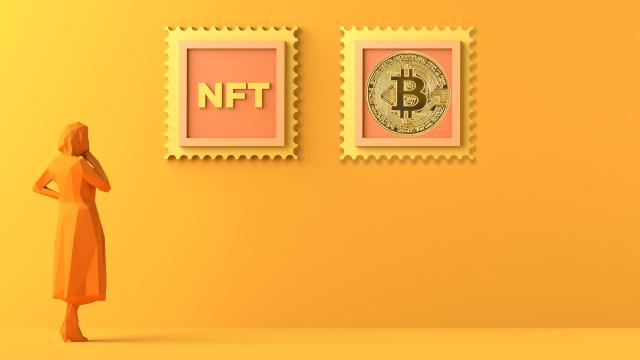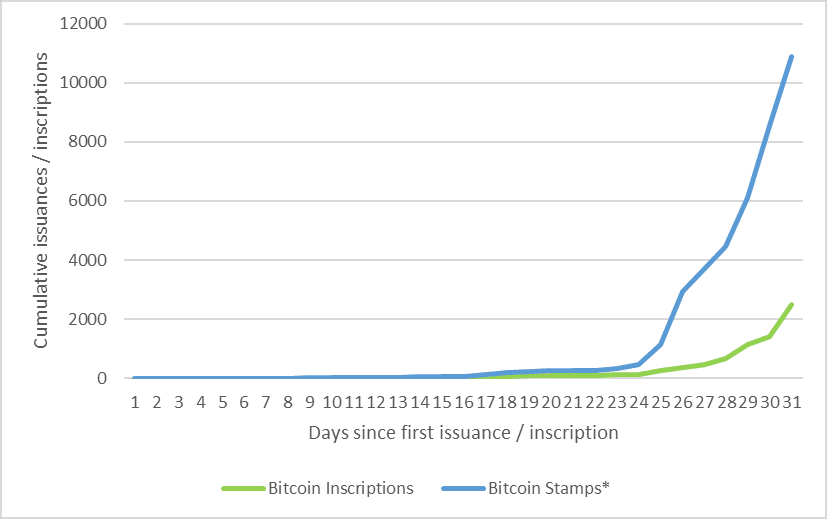All investment/financial opinions expressed by NFTevening.com are not recommendations.
This article is educational material.
As always, do your own research before making any kind of investment.
all about cryptop referances
Bitcoin NFTs continue to evolve at a rapid pace. Now a new type of NFT called “Stamps” has taken the Bitcoin blockchain by storm this week. So, what do we know about stamps?

The name Stamps stands for “Secure Tradeable Art Maintained Securely”. Users can use stamps to enter image data on the Bitcoin blockchain. Since their creation in March, users have created over 10,000 new NFTs using Bitcoin stamps. In comparison, Bitcoin Ordinals barely cracked 2,000 items issued during their first month of existence.
Notable Bitcoin Personality “Mike in Space” Created Stamps. He created the new technology to provide an alternative to entering Ordinals. Stamps offer many advantages to Ordinal inscriptions.

The primary benefit of stamps is improved decentralization and immutability. Individual node runners can crop data from the Ordinal NFT, thereby potentially creating different versions of the same NFT. So, at a large enough scale, a device with enough node runners could theoretically challenge the consensus on what the correct data for a given Ordinal inscription should be. In contrast, Stamps stores images directly in transaction outputs, preventing node runners from manually changing data. This difference ensures that all NFTs created using stamps will be immutable forever.
Mike in Space writes, “Storing ‘Art on the Blockchain’ as a method of achieving permanence is often a misnomer in the NFT world. Most NFTs are just image pointers to centralized hosting or stored on-chain in clippable witness data. We propose a method to embed base64-formatted image data using transaction outputs in a novel way….By doing so, the data is preserved in such a way that it is impossible to crop from a full node, and that data is preserved immutably forever.”
Bitcoin stamps can also be semi-fungible. Users can issue “1 of 1” or “1 of many” digital assets, similar to Ethereum’s ERC-1155 token standard. This capability opens up many new uses for NFT technology, and is sure to help stamps gain wider use over time.
Finally, Bitcoin Stamps are also more computationally efficient than Bitcoin Ordinals. Stamps do not need to be stored across all Bitcoin nodes. This feature makes it easier to create, store and trade lightweight image files.
Casey Rodarmor created Bitcoin Ordinals in January 2023. His goal was to provide Bitcoin fans with a methodology to create their own form of non-fungible digital collectibles. Rodarmor, a programmer by trade, figured out a way to assign a numbering scheme to individual Satoshis, the lowest unit of measurement for Bitcoin.
By doing so, users can treat each Satoshi as its own unique token and associate digital content with them in a process called “enrollment”. This content can be images, text or video. Initially, only people running full Bitcoin nodes could create Ordinals. This relatively high entry line caused a mania where demand increased for a small supply of Bitcoin Ordinals. Buyers believe that low-number inscriptions on Bitcoin will be historically significant one day. For example, one buyer paid 9.5 BTC for an “Ordinal Punk” in February, good for $215,000 at the time.

Builders like Mike in Space and Casey Rodarmor continue to iterate on Bitcoin more than 14 years after its invention. Therefore, by building stamps and ordinals, they are helping to push the boundaries of what we can do with blockchain technology.
All investment/financial opinions expressed by NFTevening.com are not recommendations.
This article is educational material.
As always, do your own research before making any kind of investment.